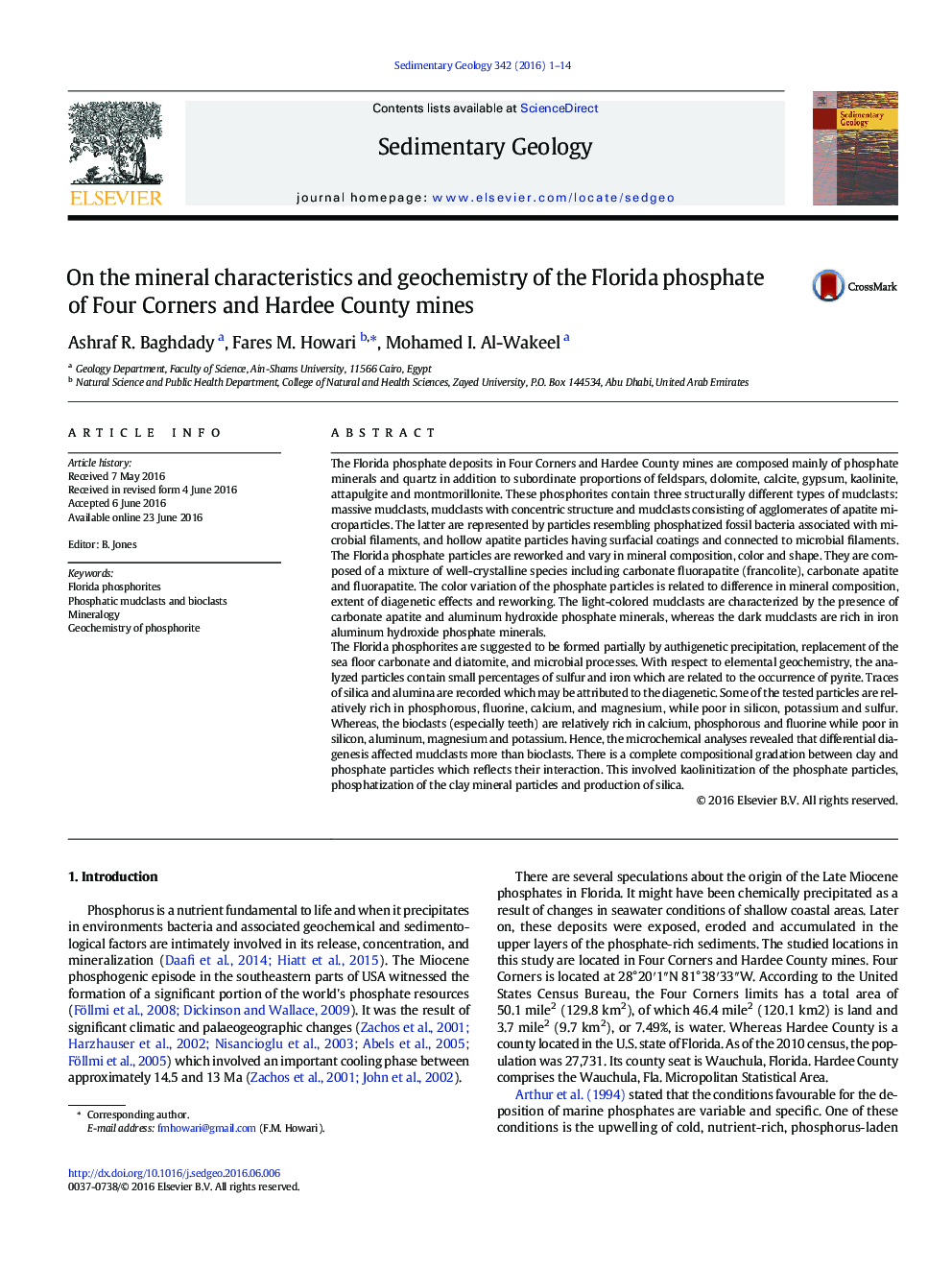| کد مقاله | کد نشریه | سال انتشار | مقاله انگلیسی | نسخه تمام متن |
|---|---|---|---|---|
| 4688977 | 1636021 | 2016 | 14 صفحه PDF | دانلود رایگان |

The Florida phosphate deposits in Four Corners and Hardee County mines are composed mainly of phosphate minerals and quartz in addition to subordinate proportions of feldspars, dolomite, calcite, gypsum, kaolinite, attapulgite and montmorillonite. These phosphorites contain three structurally different types of mudclasts: massive mudclasts, mudclasts with concentric structure and mudclasts consisting of agglomerates of apatite microparticles. The latter are represented by particles resembling phosphatized fossil bacteria associated with microbial filaments, and hollow apatite particles having surfacial coatings and connected to microbial filaments. The Florida phosphate particles are reworked and vary in mineral composition, color and shape. They are composed of a mixture of well-crystalline species including carbonate fluorapatite (francolite), carbonate apatite and fluorapatite. The color variation of the phosphate particles is related to difference in mineral composition, extent of diagenetic effects and reworking. The light-colored mudclasts are characterized by the presence of carbonate apatite and aluminum hydroxide phosphate minerals, whereas the dark mudclasts are rich in iron aluminum hydroxide phosphate minerals.The Florida phosphorites are suggested to be formed partially by authigenetic precipitation, replacement of the sea floor carbonate and diatomite, and microbial processes. With respect to elemental geochemistry, the analyzed particles contain small percentages of sulfur and iron which are related to the occurrence of pyrite. Traces of silica and alumina are recorded which may be attributed to the diagenetic. Some of the tested particles are relatively rich in phosphorous, fluorine, calcium, and magnesium, while poor in silicon, potassium and sulfur. Whereas, the bioclasts (especially teeth) are relatively rich in calcium, phosphorous and fluorine while poor in silicon, aluminum, magnesium and potassium. Hence, the microchemical analyses revealed that differential diagenesis affected mudclasts more than bioclasts. There is a complete compositional gradation between clay and phosphate particles which reflects their interaction. This involved kaolinitization of the phosphate particles, phosphatization of the clay mineral particles and production of silica.
Journal: Sedimentary Geology - Volume 342, 1 August 2016, Pages 1–14